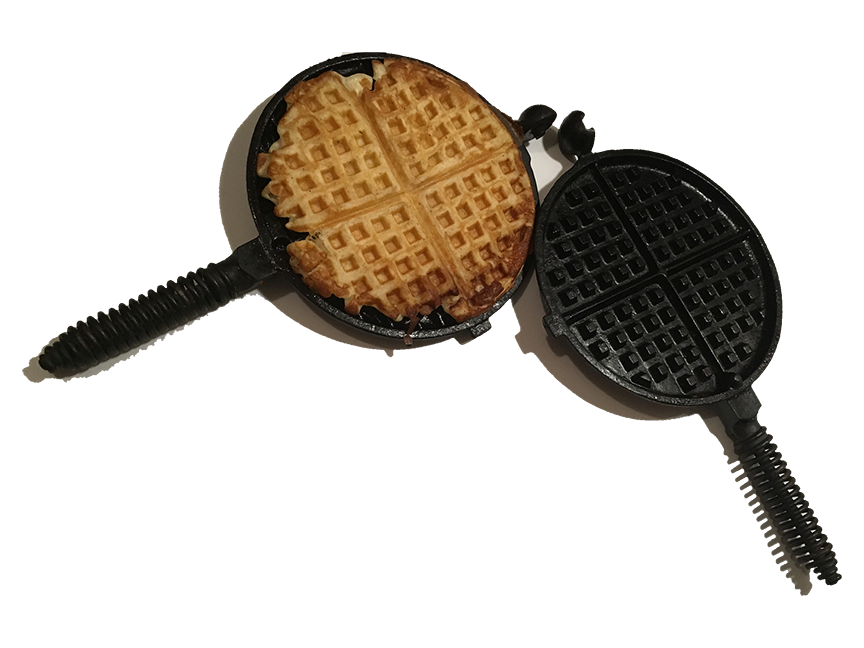Dorri Partain
Northeast News
Pancakes or waffles?
The batter is nearly the same, but the cooking method produces either a fluffy, moist pancake or a crispy, honeycombed waffle, ready for butter and syrup.
The ancient Greeks discovered that placing a batter of ground wheat between two flat irons, cooked over a flame, produced a crispy wafer-like bread. By medieval times, handles had been added to ease cooking, as well as special designs engraved or molded onto the plates. Dutch settlers brought their “vaffel” irons to America but it wasn’t until Thomas Jefferson brought a waffle iron back from a trip to France that waffle frolics (waffle-themed parties) when waffles became considered an American food item.
Still, the process wasn’t easy- the cook had to heat the iron over coals or an open flame, remove it to pour on the batter, then return it to the heat source and cook on both sides. In 1869, inventor Cornelious Swartwout (1838-1910) devised a stove-top “device to cook waffles”. U.S. Patent 94,043 was crafted from cast iron, and allowed the two-piece waffle iron to sit on a collar that made flipping the iron as easy as lifting and rotating to cook on both sides.
This style was duplicated by other manufacturers, such as Stover Manufacturing Co., which featured Alaska-style wire handles instead of solid handles. They also produced a “Stover Junior” model to fit on toy stoves, a cast iron miniature so girls could practice their waffle-cooking skills.
General Electric devised the first electric model in 1911 but wasn’t introduced to the public until 1918, after Thomas J. Steinbeck invented a heating element with a built-in thermostat. Electric models meant that both sides of the waffle could be cooked at the same time and prepared at the table instead of the stove.
Despite the convenience of electric models and frozen waffles, some cooks still prefer the crispy texture that only comes from using a cast iron waffle iron.

















